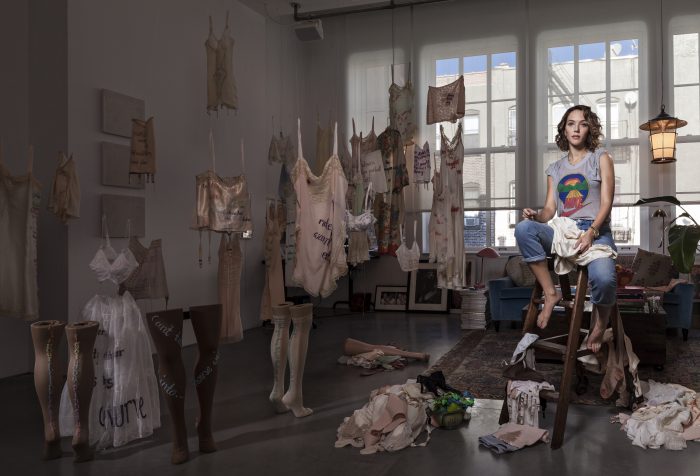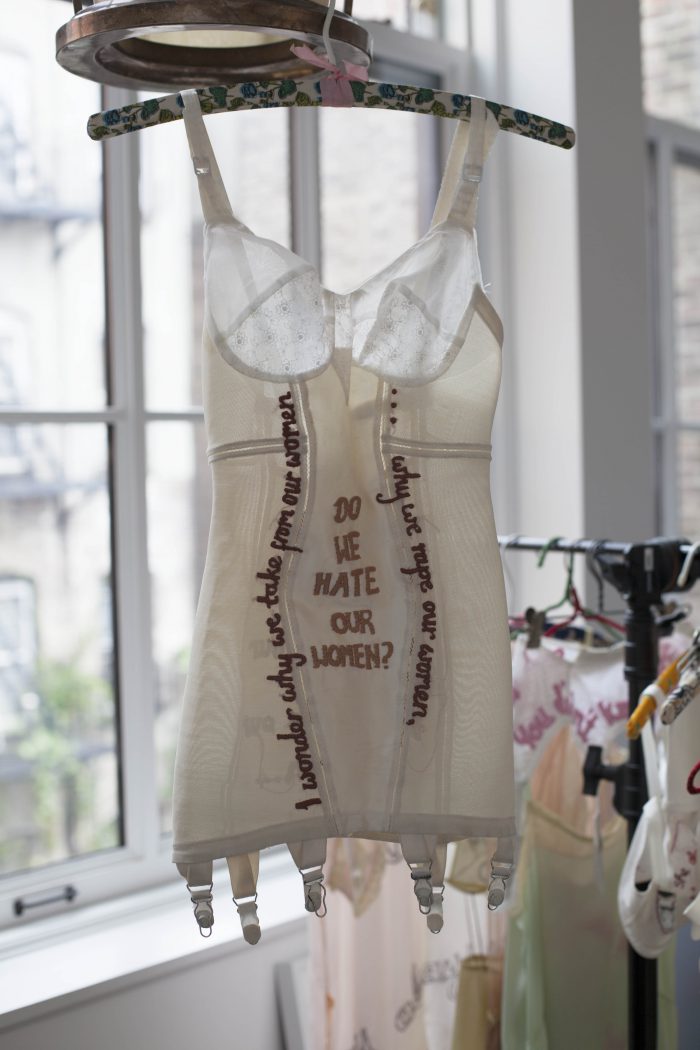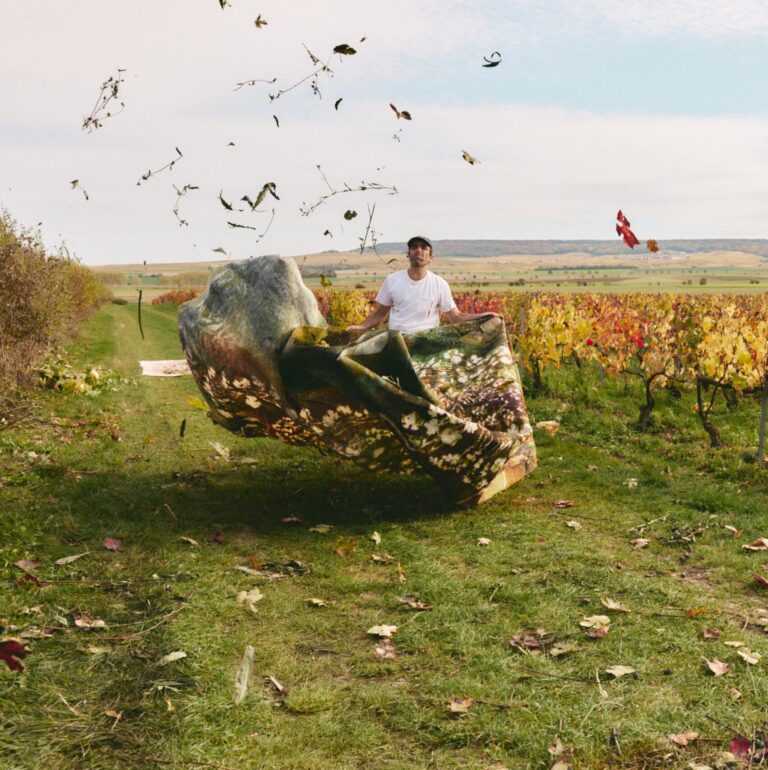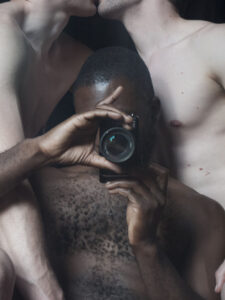
“My friends don’t want to go to the movies or watch TV with me,” says Zoë Buckman. “Because I can’t unsee the sexism and the misogyny in them. And I’m very vocal about it.” We are in her New York studio, surrounded by vintage women’s lingerie she has embroidered with Biggie and Tupac lyrics and hung from the ceiling. The pieces—part of her March show at Papillion art space in Los Angeles—typify her desire to flip the notions of female identity, partially by piggy-backing this very masculine, modern language onto it. Buckman’s parents were, not surprisingly, both feminists—her father did the cooking, and she was given her mother’s family name as opposed to his. “His attitude was that the mother carries the children and gives birth to the children, so why on earth would they have his name?”
She grew up in East London, where she was brought up within the hip-hop culture. “I loved it and still really, really love it. As I got older, though, I started to realize I had an issue with a lot of what was being said.” She channeled this struggle into her art by employing the harsh, male lyrics through creating “something from a woman’s hand on these sort of relics of the female form.” She says it doesn’t disguise the misogyny, but it does celebrate the sometimes positive messages within the music. “A lot of what Tupac said was really uplifting. There were even some pro-choice lyrics.” What interests Buckman are the polarized views of women. “We are either put on a pedestal as your mother, your queen, your wifey, or completely put in the gutter and demonized. It’s either mother/goddess or dirty slut.”

Buckman uses lingerie from the ’20s through the ’70s as her canvases. “I enjoy tracing these ideas of liberation, objectification and what our attitudes to our bodies were at different times and why that was.” Her hope is that when the pieces for the main room of her “Every Curve” exhibition come together—there will be more than 100—the observer will feel confronted by this volume, this army of females. The pieces will be spaced out in such a way that the viewer can walk among them. “That’s what activates the work. It starts to move. It can kind of come alive, dance and feel a little bit more musical.”
In another space, a neon chastity belt will hang at roughly body level. On her studio wall is a related work in progress, another neon piece that depicts a woman’s reproductive system, onto which she’s thinking about adding a pair of white boxing gloves to represent ovaries. Buckman is herself a boxer, and finds it a way to work through whatever aggression, anger or resentment she might be storing. “It’s a way of giving you confidence in your place as a woman. And not just how to defend yourself but also how to command a space and to take that space away from someone else.” In her work, she uses both boxing equipment and gynecological instruments to illustrate contemporary women’s places. “We really have to fight. We are under attack. A group of people in this country are trying to make it harder to be a woman.”
 Buckman’s Do We Hate Our Women, 2014
Buckman’s Do We Hate Our Women, 2014
On the table in front of us sits a glass jar filled with various clamps and forceps. But instead of cold, polished metal, these have been powder-coated in soft colors. I ask her whether the tools themselves would be different had a woman designed them. “Totally! They would be pretty. One of the things I find so disturbing when I have any kind of gynecological exam is the sound two instruments make when they clunk against one other.” She would fashion new ones with softer handles or some type of rubber tray so she wouldn’t have the memory of the harsh sound. Around the studio hang other works in progress, some using boxing hand wraps, but Buckman has transformed them into another field for embroidery. “With this new work, I do feel a little more combative. That said, I always like to make work that draws you in and then delivers the message. I don’t like to shout with my work.” Oddly enough, though, she really enjoys looking at other artists’ work that does shout. “I love that. It’s just not what I make.”










 in your life?
in your life?

